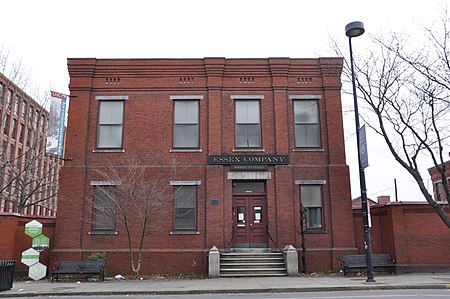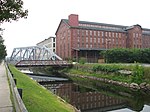Essex Company Offices and Yard

The Essex Company Offices and Yard, at 6 Essex Street in Lawrence, Massachusetts, are the historic headquarters of the Essex Company, which was responsible for Lawrence's founding in 1847 and development in the 19th century. These facilities were built in 1883–84, and consist of a street-facing office building and four others: a carpenter's shop, foundry, garage, and storage building. They were designed by Hiram Mills, the Essex Company's chief engineer. It is currently the home of the Lawrence History Center's Immigrant City Archives and Museum. The complex was listed on the National Register of Historic Places in 1979, and included in the North Canal Historic District in 1984.
Excerpt from the Wikipedia article Essex Company Offices and Yard (License: CC BY-SA 3.0, Authors, Images).Essex Company Offices and Yard
Methuen Street, Lawrence
Geographical coordinates (GPS) Address Nearby Places Show on map
Geographical coordinates (GPS)
| Latitude | Longitude |
|---|---|
| N 42.707222222222 ° | E -71.154166666667 ° |
Address
Methuen Street 12
01842 Lawrence
Massachusetts, United States
Open on Google Maps









